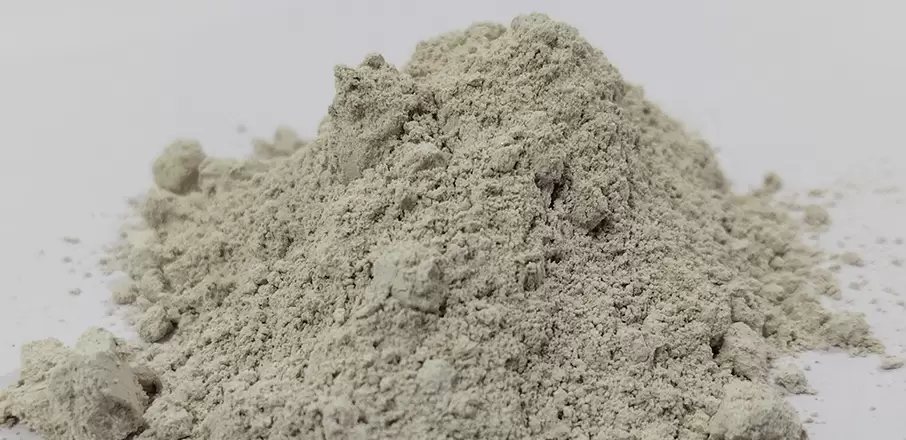One of the oldest and most used finishing methods is plastering. Plastering is used to give the wall's block or brick masonry a smooth, aesthetically beautiful surface. In addition to enhancing attractiveness, plastering serves as a cover for bricks and stones, shielding them from wind and rain.
Different plaster varieties are employed in different works according to the intended finishes, components, popularity, and required proportion. Cement plaster, clay plaster, mud plaster, gypsum plaster, and other types of plaster are all available with us.
Gypsum plaster has grown in popularity over the past few decades, generally taking the place of lime and cement plasters. We will talk about the characteristics, application techniques, and benefits of gypsum plaster in this blog.
What is Gypsum Plaster?
Gypsum is utilized as a binding agent in place of cement in plaster gypsum powder. It is a type of white cement created by partially or entirely drying the gypsum mineral. Dry gypsum powder hardens when combined with water. It is available in a format that is ready to use and doesn't require sand. All that has to be done is add water. It provides leveled walls with the highest polish and great thermal and acoustic qualities.
Gypsum plaster offers a smooth interior finish and makes a great foundation for high-quality paints and wallpaper finishes. It can be used on the wall's smooth and textured surfaces. In comparison to conventional cement mortar, gypsum plaster is simple to apply and requires less specialized labor. Gypsum plaster should be applied and surface-prepared with care to avoid peeling and cracking.
Bricks, hollow or solid blocks, AAC blocks, and plasterboards can all be immediately covered in gypsum plaster. Gypsum plaster is fire-resistant, impact-resistant, and has strong insulating qualities. Additionally, gypsum has a better finish and saves a lot of time during building. These qualities have unmistakably influenced real estate developers and contractors to favor gypsum plaster over conventional cement.
Technical Specification of Gypsum Plaster
Color of Finished Surface: White
Setting Time: 25-30 Minutes
Coverage Area: 21 Sq.ft per 25 kg Bag
Compressive Strength: 60-70 kg/cm2
Application of Gypsum Plaster
- Typically, bags of ready-mix gypsum plaster are sold. In a clean, dry container, add the powder and whisk the mixture for two to three minutes.
- Make sure the required plaster is not more than 13 mm thick.
- Firmly press gypsum plaster onto the surface.
- Continue flattening while the plaster stiffens. When the plaster is sufficiently hard, wash the surface as needed with a sponge flotation device and water.
- Gradually trowel the surface to achieve a smooth finish.
- The plastered surface needs to be shielded from ongoing moisture exposure.
- Only once the surface has dried sufficiently should painting begin.
Advantages of Gypsum Plaster
- No shrinkage cracks: Compared to the cement and water reaction, the gypsum reaction generates less heat. As a result, gypsum plaster has fewer shrinkage fractures than conventional cement mortar plaster.
- High Performance: After drying, very high performance. lightweight and resilient.
- Gypsum plastering doesn't require such a long waiting period, which cuts down on building time. Gypsum plaster dries and settles in three days, thus construction moves more quickly because of this.
- Gypsum plaster does not require curing, which saves time and water during construction.
- Gypsum is a safe, non-combustible, fire-resistant material that may be used to cover the inside walls of your home because it contains a lot of water.
- Gypsum can be put directly over brick or blockwork without additional finishing. Plaster made of gypsum is relatively simple to apply and level.
- High Productivity: Requires significantly less time than traditional cement mortar plaster.
- Smooth Finish: Walls that are perfectly straight, smooth, and lined up.
- Reduced Supervision: Because cement and sand must be properly balanced, careful quality monitoring is necessary for cement mortar plaster.
- Gypsum is a substance that is easily accessible in raw form. Traditional cement mortar plaster requires natural sand as a raw ingredient, but this material is difficult to get by.
- River sand and natural sand are also prohibited in many nations.
- Gypsum plaster has a high level of fire resistance.
- Low Heat Conductivity: The thermal conductivity of gypsum plaster is low. This reduces the cost of electricity used to heat and cool a building's rooms.

